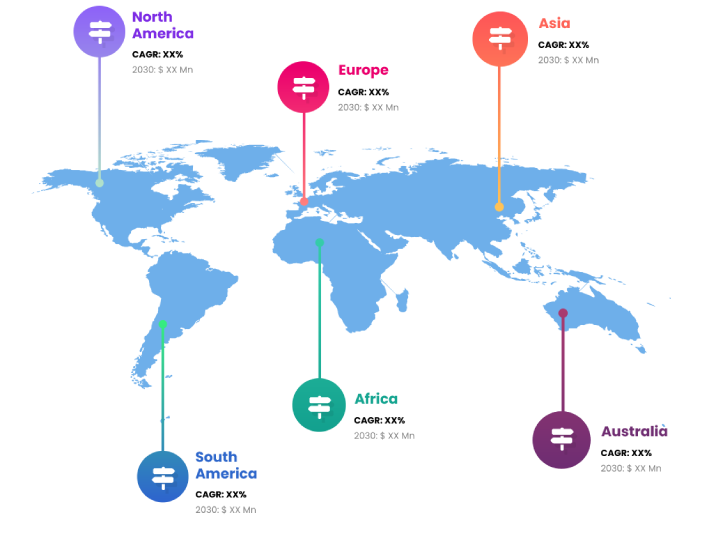The necessity to boost agricultural output and ensure an adequate food supply for a growing global population has increased the significance of crop protection chemicals over the past few decades. The rising human population around the globe is the primary driver of this expansion, as it necessitates greater output from the agricultural sector to guarantee adequate food for everyone. In addition, farmers are using more crop protection measures because of reasons including shrinking farmland and rising pest damage, both of which reduce crop yields. Chemical items used in agriculture, such as insecticides, help farmers recover lost harvests due to unwanted insects and diseases. About 800 chemically active chemicals are approved for use in crop protection products across the globe, per the Royal Society of Chemicals. A growing global population, shrinking farmland, concerns about food security, and the need to boost agricultural output are all factors fueling the market's expansion.

Utilization Analysis
Herbicides, insecticides, fungicides, and others including rodenticides, disinfectants, fumigants, plant growth regulators, and mineral oils make up the majority of the crop protection chemical market in the BRICS countries. In emerging economies like India and China, the herbicides sector has been, and is projected to be, the market leader. Herbicides are chemicals used to control unwanted plant life. Their widespread use in weed control contributes to improved agricultural yields and quality. When herbicides are used in an agricultural ecosystem, it can alter the make-up of weed populations. The agricultural industry is the largest consumer of herbicides worldwide. The effectiveness of herbicides in weed control methods is anticipated to boost the industry next year. The development and introduction of new herbicide products with differentiated characteristics based on weed selectivity, crop type, etc. contribute to the expansion of the crop protection chemical market.
Source-Based Analysis
The BRICS crop protection chemical market is broken down into two categories, natural and synthetic, depending on their respective origins. The market is dominated by the synthetic chemicals subsector. These are largely attributable to widespread chemical use in Asia, South America, and Middle and East Africa. Synthetic pesticides are increasingly used because to their low cost and their efficiency against specific pests. Conversely, most countries and local governments support environment eco-friendly crop protection goods, driving the demand for natural source chemicals of crop protection products.
Driver
The usage of crop protection methods is on the rise, leading to increased crop yields and full maturation.
Chemicals designed to deter pests like insects and weeds from damaging crops are a common tool in today's farming. An rise in crop production guarantees that a growing population will have enough to eat. The Food and Agriculture Organization reports that the three largest markets for crop protection chemicals are Brazil, China, and the United States. One of the key reasons for the higher agricultural output is the increased usage of pesticides and herbicides.
The emergence of pests and illnesses as a result of climate change might hinder crop production.
Due to climate change, pests and plant diseases have proliferated at an alarming rate. The effects of climate change on pest control and crop protection are substantial. The effects of many pests and illnesses that impair crop yields are mitigated by climate change. Reduced agricultural output is an inevitable consequence of adapting to climate change. Irregular rainfall increases the prevalence of fungal illnesses. These elements contribute to a growing demand for crop protection chemical products, which in turn fuels the industry.
Restraint
Pesticide-resistant insects are on the rise.
The development of pest resistance to crop protection agents is a key restraint on the industry. As the efficacy of some active substances has decreased, insect resistance has developed. Increased pest populations, altered insect metabolic processes, and the subsequent development of resistance all play a role in this phenomenon.
Strategic Market Shifts
Chemicals used to shield crops from pests and illnesses are crucial to maximizing harvests. The annual FAO study states that pests and diseases kill roughly 40% of the world's agricultural crops. To counteract these issues and boost output, the application of crop protection agents is expected to rise. From 2000 to 2010, the amount of insecticides used worldwide rose by 4.2 million tons. Direct investment in agriculture has increased dramatically, leading to a rise in the sophistication of farming machinery. The primary goal of this funding is to encourage the creation of innovative and useful goods. Thanks to technological progress, more sophisticated farming practices, such as the use of farm robotics and innovative new farming techniques, have emerged. The agriculture industry is benefiting from this influx of capital.
Report Coverage
Global BRICS Crop Protection Chemical research report categorizes the market for global based on various segments and regions, forecasts revenue growth, and analyzes trends in each submarket. Global BRICS Crop Protection Chemical report analyses the key growth drivers, opportunities, and challenges influencing the global market. Recent market developments and BRICS Crop Protection Chemical competitive strategies such as expansion, product launch and development, partnership, merger, and acquisition have been included to draw the competitive landscape in the market. The report strategically identifies and profiles the key BRICS Crop Protection Chemical market players and analyses their core competencies in each global market sub-segments.
| REPORT ATTRIBUTES | DETAILS |
|---|---|
| Study Period | 2017-2030 |
| Base Year | 2022 |
| Forecast Period | 2022-2030 |
| Historical Period | 2017-2021 |
| Unit | Value (USD Billion) |
| Key Companies Profiled | BASF SE, The Dow Chemical Company, Dupont, Sumitomo Chemical Co. Ltd, Syngenta AG, Bayer Cropscience AG, FMC Corporation, Nufarm Limited, Adama Agricultural Solutions Ltd., Verdesian Life sciences, Bioworks Inc., Arysta Life sciences Corporation, America Vanguard Corporation, Corteva Agriscience, UPL Limited, Jiangsu Yangnong Chemical Group Co Ltd |
| Segments Covered | • By Product |
| Customization Scope | Free report customization (equivalent to up to 3 analyst working days) with purchase. Addition or alteration to country, regional & segment scope |
Key Points Covered in the Report
- Market Revenue of BRICS Crop Protection Chemical Market from 2021 to 2030.
- Market Forecast for BRICS Crop Protection Chemical Market from 2021 to 2030.
- Regional Market Share and Revenue from 2021 to 2030.
- Country Market share within region from 2021 to 2030.
- Key Type and Application Revenue and forecast.
- Company Market Share Analysis, BRICS Crop Protection Chemical competitive scenario, ranking, and detailed company
profiles. - Market driver, restraints, and detailed COVID-19 impact on BRICS Crop Protection Chemical
Market
Competitive Environment:
The research provides an accurate study of the major organisations and companies operating in the global BRICS Crop Protection Chemical market, along with a comparative evaluation based on their product portfolios, corporate summaries, geographic reach, business plans, BRICS Crop Protection Chemical market shares in specific segments, and SWOT analyses. A detailed analysis of the firms' recent news and developments, such as product development, inventions, joint ventures, partnerships, mergers and acquisitions, strategic alliances, and other activities, is also included in the study. This makes it possible to assess the level of market competition as a whole.
List of Major Market Participants
BASF SE, The Dow Chemical Company, Dupont, Sumitomo Chemical Co. Ltd, Syngenta AG, Bayer Cropscience AG, FMC Corporation, Nufarm Limited, Adama Agricultural Solutions Ltd., Verdesian Life sciences, Bioworks Inc., Arysta Life sciences Corporation, America Vanguard Corporation, Corteva Agriscience, UPL Limited, Jiangsu Yangnong Chemical Group Co Ltd
Primary Target Market
- Market Players of BRICS Crop Protection Chemical
- Investors
- End-users
- Government Authorities
- Consulting And Research Firm
- Venture capitalists
- Third-party knowledge providers
- Value-Added Resellers (VARs)
Market Segment:
This study forecasts global, regional, and country revenue from 2019 to 2030. INFINITIVE DATA EXPERT has segmented the global BRICS Crop Protection Chemical market based on the below-mentioned segments:
Global BRICS Crop Protection Chemical Market, By Crop Type
Cereal and Grains
Oilseed and Pulses
Fruits and Vegetables
Global BRICS Crop Protection Chemical market, By Application
Spraying
Dusting
Seed Treatment
Soil Treatment
Volatilization
Others
Global BRICS Crop Protection Chemical Market, By Use
Herbicides
Insecticides
Fungicides
Global BRICS Crop Protection Chemical market, Regional Analysis
- Europe: Germany, Uk, France, Italy, Spain, Russia, Rest of Europe
- The Asia Pacific: China,Japan,India,South Korea,Australia,Rest of Asia Pacific
- South America: Brazil, Argentina, Rest of South America
- Middle East & Africa: UAE, Saudi Arabia, Qatar, South Africa, Rest of Middle East & Africa
You will get in-depth and extensive brics crop protection chemical market market research and competitor analysis for your business to help you develop more profound insights into the brics crop protection chemical market Market.
Through INFINITIVE Data Expert is a professional Market Research services, I will identify the brics crop protection chemical market market size, demand & opportunities, growth rate, and target audience with a comprehensive analysis of your competitors.



